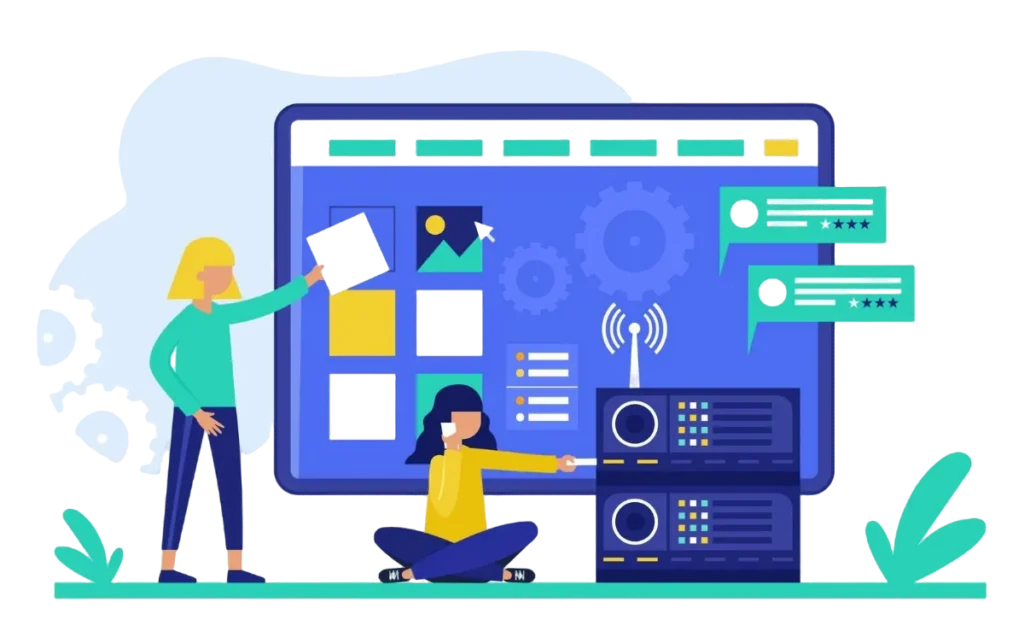Infodot delivers enterprise level patch management and remote monitoring, and management (RMM) designed for Global IT enterprises that need visibility, security and compliance at scale. Whether you are a startup or a global enterprise our managed services will ensure your IT infrastructure is always proa actively up to date, protected and compliance ready.

Unpatched devices and blind spots in IT infrastructure are the leading causes of security
breaches and compliance violations. Infodot, s Patch management and RMM service
eliminates these risks by combing automated patching with 24/7 remote monitoring,
real time reporting and policy driven approaches tailored to your business operations.






















“As our IT support team, Infodot is quite reliable. No matter the size of the issue, we know that when we call or email, we will get a response back from your team. Your commitment to customer service is highly appreciated. Infodot has helped solve a lot of day-to-day IT challenges that were previously creating bottlenecks for us.

“As an early stage start-up, the engineering team was fully focussed on our cloud infrastructure and we lacked time and skill to manage office IT infrastructure. This created many bottlenecks for us – unreliable office internet connectivity, unnecessary expenditures due to lack of regular maintenance etc. Once Infodot took up the upkeep of our office IT infrastructure, we could immediately recognize the value they brought in. New internet connectivity architecture was proposed and implemented by Infodot first. It really helped solving our office internet connectivity issues and made our office network more secure. As a co-founder, I also would like to mention that they are accommodative and they understand an early stage start-up’s financial constraints. We are happy with their services and would definitely recommend them.”
Ability to perform automated patch scans and deployments to reduce manual efforts and errors.
Providers should have access to updated threat intelligence to prioritize patching for critical vulnerabilities.
The service should be scalable to support growing IT environments or specific needs, whether the organization is a small business or a large enterprise.
Detailed reports on patch compliance, system vulnerabilities, and patching history for auditing and compliance purposes.
A good PMaaS provider prioritizes patches based on the threat level, business impact, and the organization’s unique risk profile.
Reliable SLAs that guarantee response times, patching frequencies, and ongoing support to meet the organization’s needs.

PMaaS providers have specialized expertise, access to advanced tools, and dedicated teams focused solely on managing patches. This ensures timely patching without overburdening the internal IT team.
By staying on top of the latest security patches, PMaaS helps reduce the attack surface and protect against cyber threats. Providers often have access to threat intelligence, allowing them to respond quickly to critical vulnerabilities.
PMaaS providers typically maintain extensive logs and documentation of patching activities, aiding in compliance with regulations like HIPAA, GDPR, or PCI-DSS. Reports on patch status, compliance, and vulnerabilities are usually available to clients for audits and reviews.
Outsourcing patch management can be more cost-effective than hiring and training an in-house team. PMaaS allows organizations to pay for patching as a service, reducing the need for upfront investment in patch management tools and personnel.
Many PMaaS providers offer round-the-clock monitoring and support, ensuring critical patches can be applied quickly, even outside normal business hours.

Infodot provides a comprehensive range of IT services, including co-managed support, cybersecurity, cloud solutions, and IT consultancy, designed to optimize your business operations.
Co Managed IT Service This Co managed IT Support & Services approach where a business
Let’s schedule an introductory call to explore how effective patch management can enhance your system security and streamline updates. Looking forward to assisting you.
Patch Management as a Service is an outsourced solution where a third-party provider manages and automates the patching process for an organization’s IT infrastructure. This includes identifying, testing, and deploying patches for operating systems, applications, and other software to ensure security vulnerabilities are addressed and systems are up-to-date.
Patch management is crucial for cybersecurity because unpatched software is one of the main entry points for cyberattacks. Regular patching helps protect against known vulnerabilities that hackers might exploit. Staying updated reduces the risk of data breaches, malware, and ransomware attacks.
The frequency of patch deployment depends on the organization’s needs and the criticality of the patches. Typically, critical security patches are applied as soon as possible, while routine patches are scheduled monthly or quarterly. Patch Management as a Service providers often tailor schedules to fit an organization’s risk tolerance and business requirements.
In some cases, patching may require system reboots or short downtime, especially for critical updates. However, Patch Management as a Service providers work to minimize impact by scheduling patches during low-usage hours or using techniques like staggered deployment. They also test patches to ensure compatibility and reduce the chance of system disruptions.
An effective patch management service should provide regular reports on patch status, compliance levels, and any issues encountered during deployment. Additionally, look for a provider that monitors patch success rates, provides timely updates on critical vulnerabilities, and offers support for troubleshooting any post-patch issues. Transparency and clear communication are key indicators of an effective service.